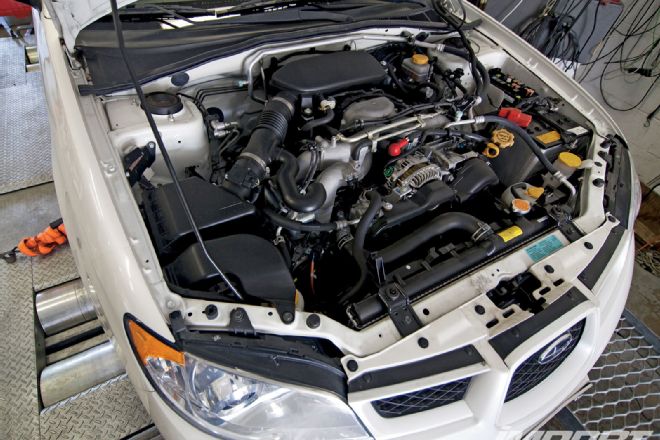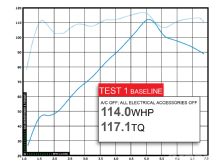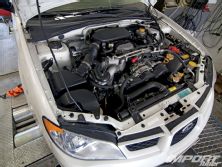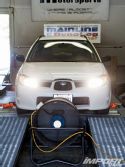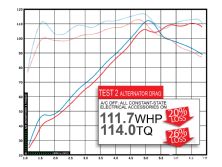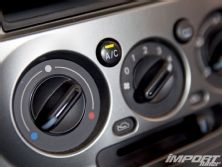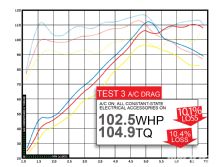The summer season is here, and for those of us behind the wheels of tuned imports, that means our driving enjoyment shares the road with three serious considerations: keeping power and torque at a maximum, keeping money shelled out for over-inflated gasoline prices to a minimum, and staying cool while doing it all. Keeping engine and driveline temps down will always be the priority among gearheads (flip to page 58 for more), but should high performance come at the cost of decreased comfort to you and your passengers? Should staying cool cost you at the pump?
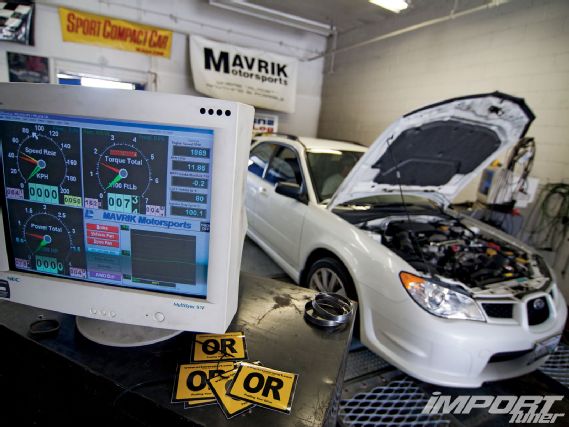 |
Fact Or Fiction: Do Electrical Systems Decrease Power?
|
Fact Or Fiction: Do Electrical Systems Decrease Power?
We know that running the air conditioner (A/C) causes parasitic loss that decreases a car's power output to the wheels-most manufacturers will say so outright. But we've never heard to what degree this happens. And following suit, does powering electrical devices like headlights, stereo equipment, and the interior fan/heat cause the alternator to drag on an engine's output even more? To put an end to these perpetual ponderings, we commandeered Managing Editor Drew's '07 Subaru 2.5i and headed over to the Mainline Dyno rental facility of Mavrik Motorsports in Fullerton, CA, for some back-to-back testing.
To find out just how much alternator and A/C compressor drag may be affecting power and torque output, we baselined our test car, keeping the operation of electrical components to a minimum. This meant we disconnected its twin electrical radiator fans and daytime-running lights by pulling their respective fuses under the hood. All other electrical accessories were kept off, along with the A/C, and the Subie churned out a three-run average of 114.0 hp and 117.1 lb-ft of torque through its wheels.
To test the amount of parasitic loss inflicted on the Subie's drivetrain by alternator drag, we reconnected its daytime running lights and radiator fans, blasted the heat and stereo (Bus Driver blaring over Drew's bone-ass-stock system), and switched on the headlights, high beams, and interior lights. Hazards and windshield wipers were kept "off" due to their pulsating actuation which could erratically impact results, and although we were tempted to ask Mavrik owner Teddy to hold in the horn during testing, we didn't-sitting in 120-degree heat throughout testing had annoyed him enough. A/C was kept off for this test, too.
After our three-run average of testing alternator drag confirmed that using electrical components does, in fact, weigh negatively on engine output, we were really looking forward to testing the A/C system. We can all attest to how much slower a stock Civic will ascend a steep hill with it's A/C on as opposed to off; naturally, we were expecting monster losses. But when the first two runs with blasting A/C (in addition to the electrical accessories left on from the previous test) returned virtually the same numbers as before, we were confused. As it turns out, Subaru had the foresight to build in an over-ride which disengages the A/C compressor under full-throttle, enabling full power to be applied to the wheels should the situation call for it. Once we figured out how to bypass this rather welcome feature (by engaging A/C after the throttle had been pressed, as opposed to before), power and torque took a dive throughout the entire rpm range.
The Verdict:
Our dyno testing was only recorded during full-throttle blasts, and only peak power and torque numbers are given here. But it stands to reason that the percentage by which those numbers decreased at full throttle is the same by which they would decrease at any amount thereof, making your car slower all around.
Fuel economy wasn't tested this time, but any all-around power loss means you'll need to apply more throttle to maintain comparable speed and acceleration, which in turn will cost you more at the pump. In a naturally aspirated Subaru 2.5i, 11.5whp might be a small price to pay for comfort. But with a 10.1-percent loss in power translating to over 50whp in our RWD, 450whp 370Z (June, '10 cover) . . . we may be willing to suffer the heat!

